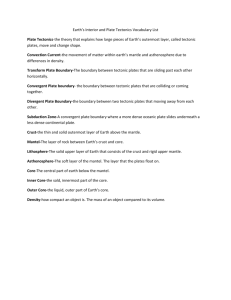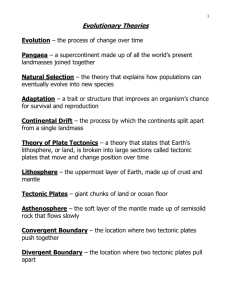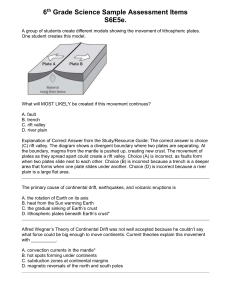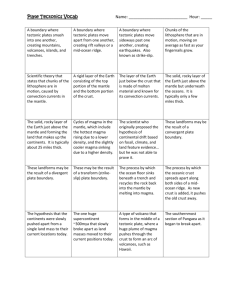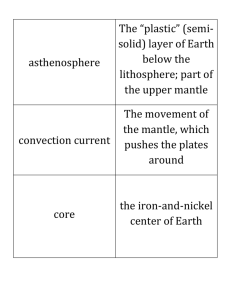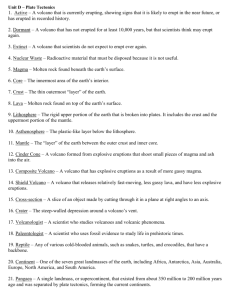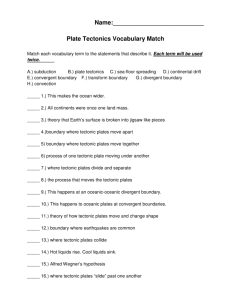Earth Science Vocabulary: Plate Tectonics & Volcanoes
advertisement
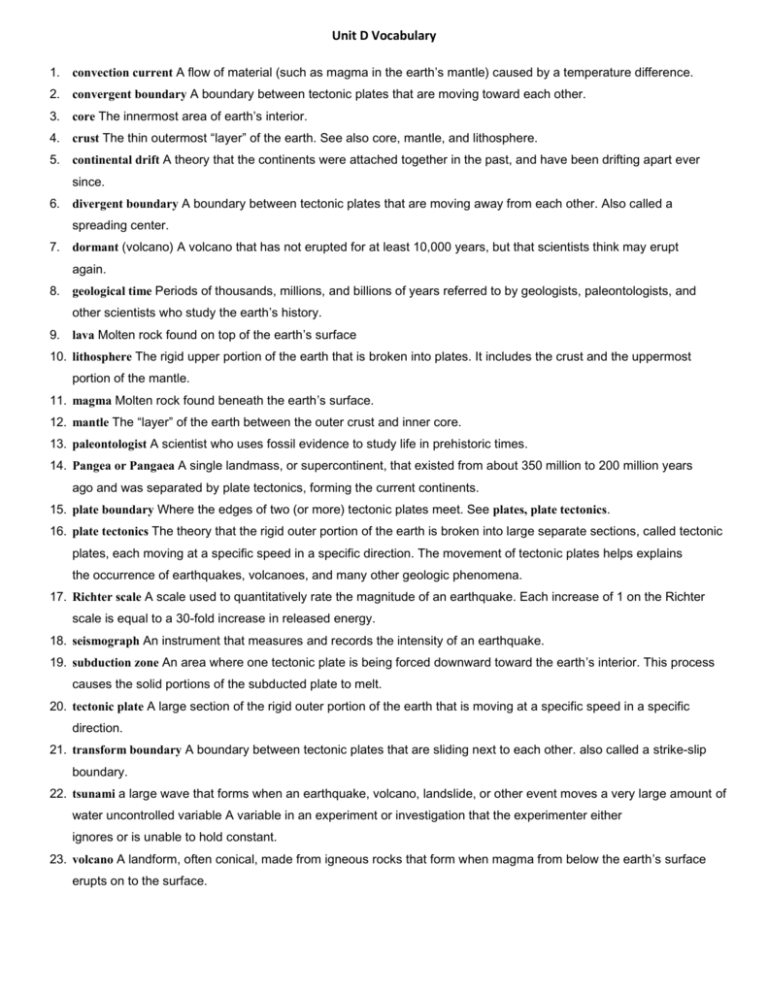
Unit D Vocabulary 1. convection current A flow of material (such as magma in the earth’s mantle) caused by a temperature difference. 2. convergent boundary A boundary between tectonic plates that are moving toward each other. 3. core The innermost area of earth’s interior. 4. crust The thin outermost “layer” of the earth. See also core, mantle, and lithosphere. 5. continental drift A theory that the continents were attached together in the past, and have been drifting apart ever since. 6. divergent boundary A boundary between tectonic plates that are moving away from each other. Also called a spreading center. 7. dormant (volcano) A volcano that has not erupted for at least 10,000 years, but that scientists think may erupt again. 8. geological time Periods of thousands, millions, and billions of years referred to by geologists, paleontologists, and other scientists who study the earth’s history. 9. lava Molten rock found on top of the earth’s surface 10. lithosphere The rigid upper portion of the earth that is broken into plates. It includes the crust and the uppermost portion of the mantle. 11. magma Molten rock found beneath the earth’s surface. 12. mantle The “layer” of the earth between the outer crust and inner core. 13. paleontologist A scientist who uses fossil evidence to study life in prehistoric times. 14. Pangea or Pangaea A single landmass, or supercontinent, that existed from about 350 million to 200 million years ago and was separated by plate tectonics, forming the current continents. 15. plate boundary Where the edges of two (or more) tectonic plates meet. See plates, plate tectonics. 16. plate tectonics The theory that the rigid outer portion of the earth is broken into large separate sections, called tectonic plates, each moving at a specific speed in a specific direction. The movement of tectonic plates helps explains the occurrence of earthquakes, volcanoes, and many other geologic phenomena. 17. Richter scale A scale used to quantitatively rate the magnitude of an earthquake. Each increase of 1 on the Richter scale is equal to a 30-fold increase in released energy. 18. seismograph An instrument that measures and records the intensity of an earthquake. 19. subduction zone An area where one tectonic plate is being forced downward toward the earth’s interior. This process causes the solid portions of the subducted plate to melt. 20. tectonic plate A large section of the rigid outer portion of the earth that is moving at a specific speed in a specific direction. 21. transform boundary A boundary between tectonic plates that are sliding next to each other. also called a strike-slip boundary. 22. tsunami a large wave that forms when an earthquake, volcano, landslide, or other event moves a very large amount of water uncontrolled variable A variable in an experiment or investigation that the experimenter either ignores or is unable to hold constant. 23. volcano A landform, often conical, made from igneous rocks that form when magma from below the earth’s surface erupts on to the surface.
